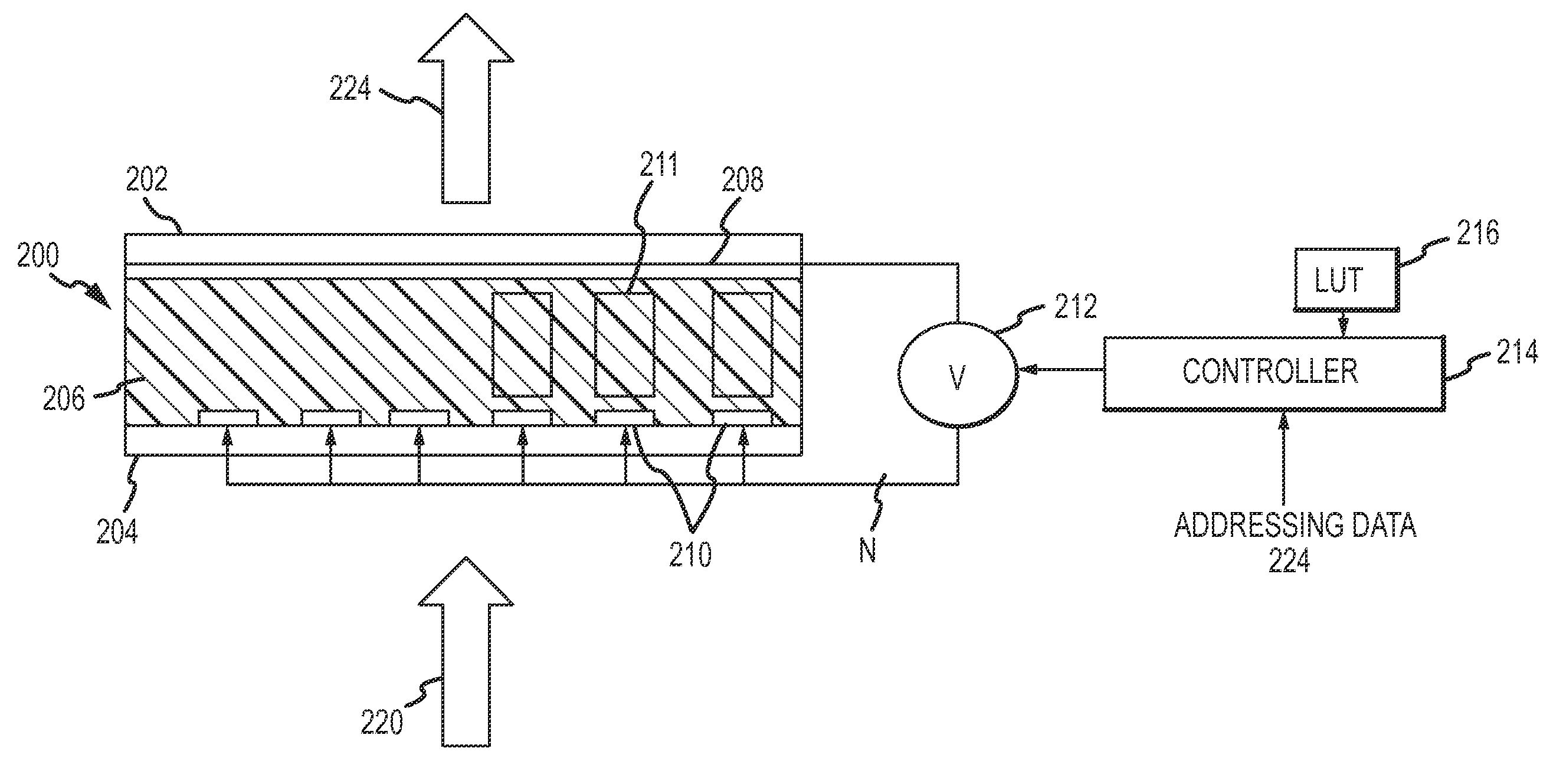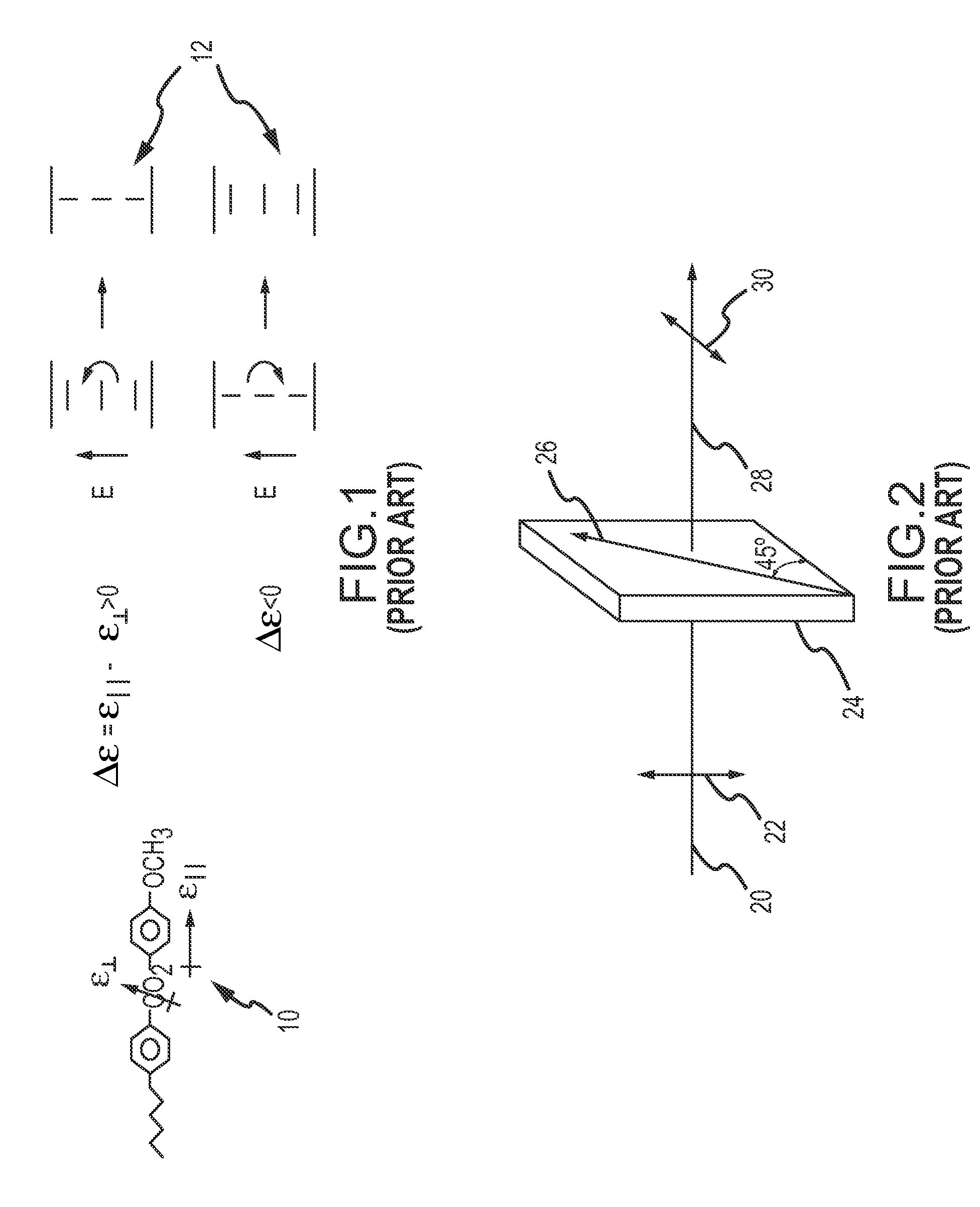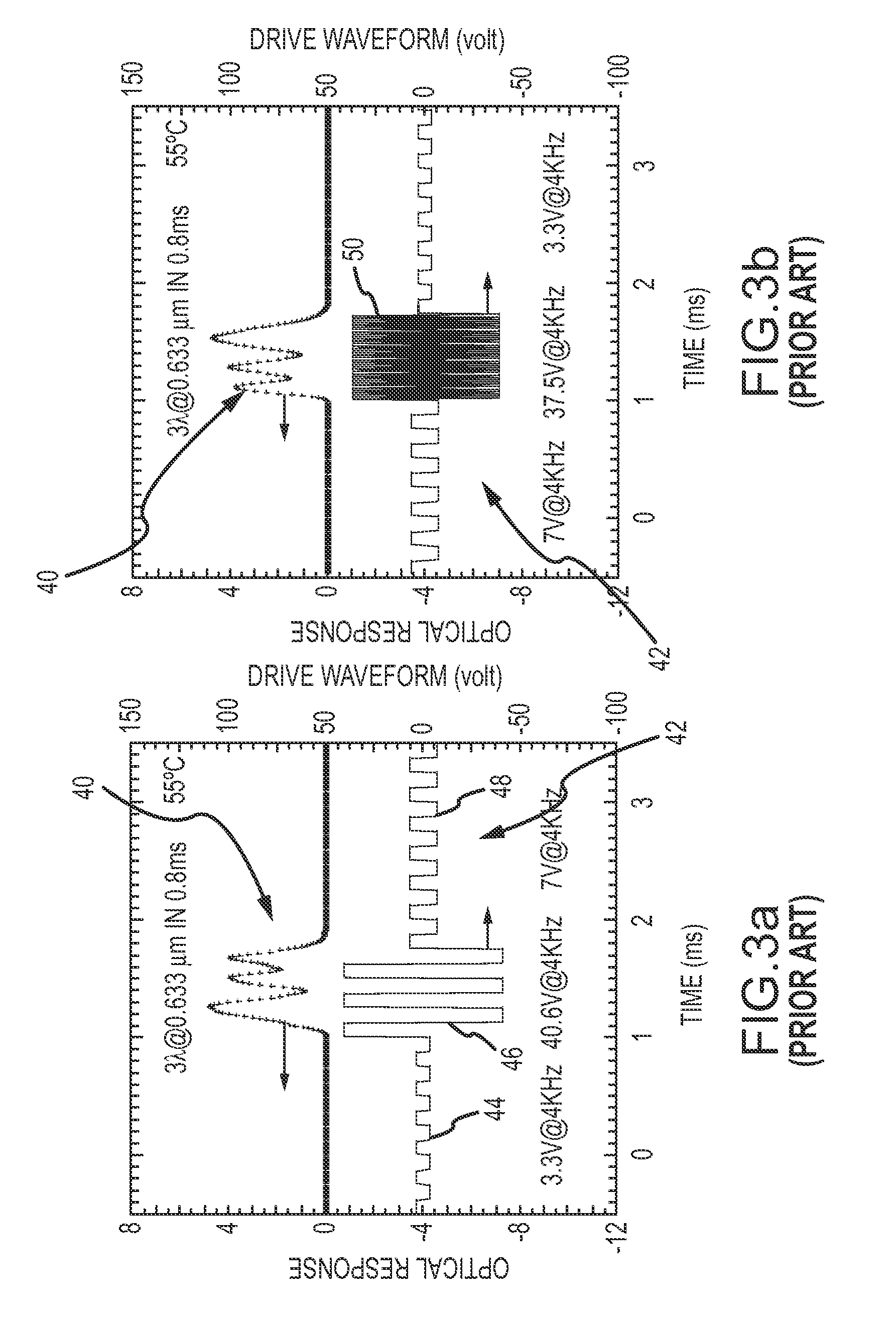Two-stage drive waveform for switching a dual frequency liquid crystal (DFLC) at large tilt angles
a dual-frequency liquid crystal and drive waveform technology, applied in static indicating devices, non-linear optics, instruments, etc., can solve the problems of not widely used dual-frequency control, molecules to respond to electric, and not desirable, so as to facilitate the operation of dflc, reduce the push on the molecules, and optimize the switching time
- Summary
- Abstract
- Description
- Claims
- Application Information
AI Technical Summary
Benefits of technology
Problems solved by technology
Method used
Image
Examples
Embodiment Construction
[0025]The present invention provides a DFLC and method of applying a two-stage drive waveform to quickly switch from a high tilt state such as above the LC's linear region or near the ‘saturated’ or ‘field-driven homeotropic’ state of the LC to a low tilt state. This approach facilitates operation of DFLCs outside their linear region and provides an alternative to scaling cell thickness for many applications.
[0026]As described above scaling the thickness of the cell allows the DFLC to be operated in its linear region of approximately 10 to 45 degrees of tilt. This approach is widely used and adequate for stable narrowband light. However, with broadband (e.g. the RGB spectrum from 400-700 nm) or wavelength shifting light (actual or effective due to angle of incidence) the conventional approach of scaling device thickness to achieve a broader range of birefringence capability is not effective. For example, to construct a switchable broad band polarization rotator like the LCTW 26 show...
PUM
| Property | Measurement | Unit |
|---|---|---|
| azimuth angle | aaaaa | aaaaa |
| azimuth angle | aaaaa | aaaaa |
| holding voltage | aaaaa | aaaaa |
Abstract
Description
Claims
Application Information
 Login to View More
Login to View More - R&D
- Intellectual Property
- Life Sciences
- Materials
- Tech Scout
- Unparalleled Data Quality
- Higher Quality Content
- 60% Fewer Hallucinations
Browse by: Latest US Patents, China's latest patents, Technical Efficacy Thesaurus, Application Domain, Technology Topic, Popular Technical Reports.
© 2025 PatSnap. All rights reserved.Legal|Privacy policy|Modern Slavery Act Transparency Statement|Sitemap|About US| Contact US: help@patsnap.com



